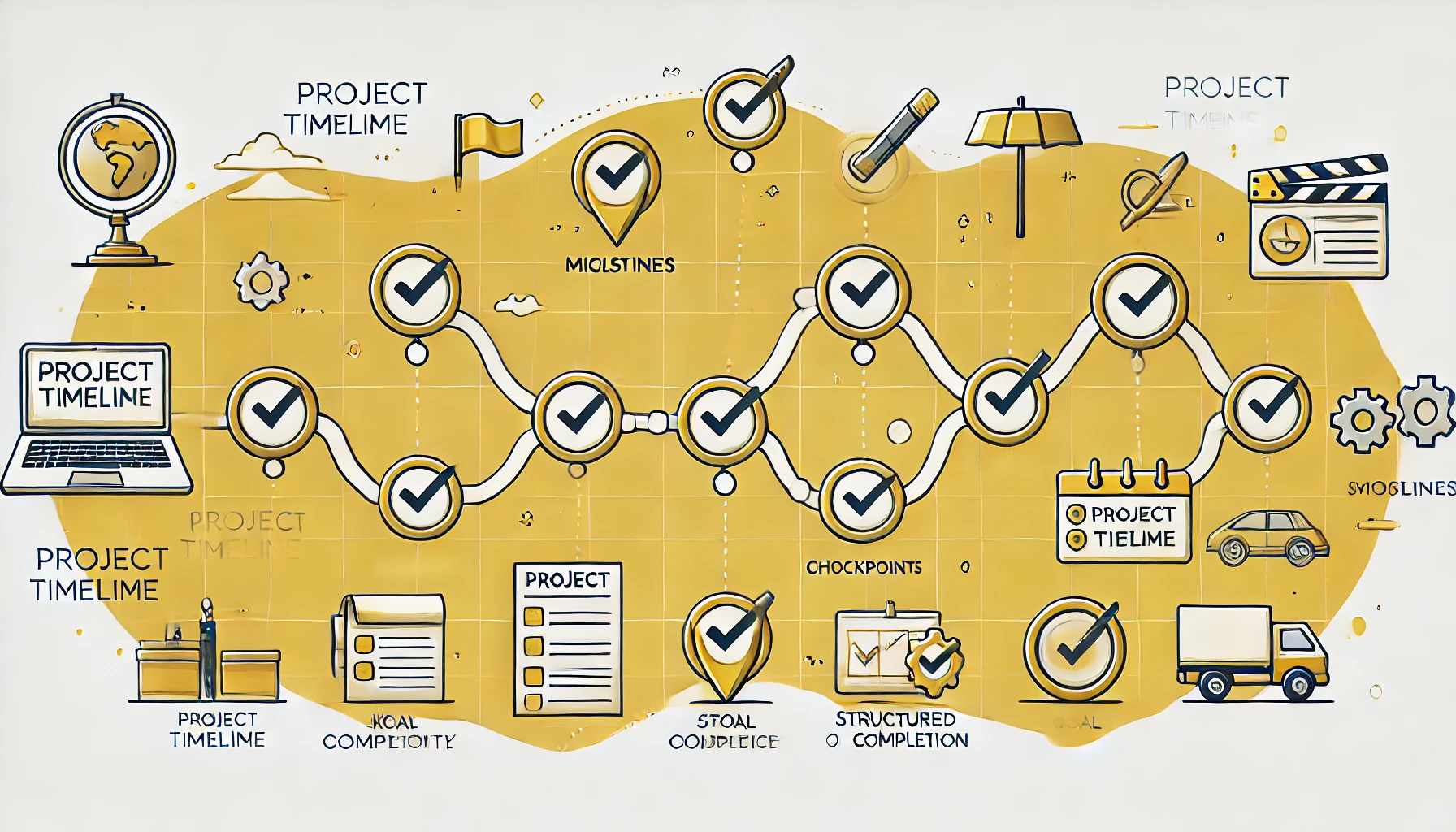Imagine you’ve just wrapped up another busy quarter, and your goals are sitting on a lonely spreadsheet collecting digital dust.
It’s that sinking feeling of knowing you set some ambitious targets, but they never quite gained traction.
If this sounds familiar, you’re not alone. The “set and forget” trap is widespread in workplaces everywhere, leading to missed opportunities and half-finished projects.
Yet the best part about goals is how they can guide you — like a compass — when they’re used properly.
Goals don’t need to be static declarations; they should live and breathe through your weekly workflows and fuel forward momentum.
The key is to shift your mindset from simply setting goals to actively managing them, in a way that keeps you energized, accountable, and constantly aligned with your team’s objectives.

Why “SMART” Goals Are Still Relevant
You’ve probably heard of SMART goals before. The acronym stands for Specific, Measurable, Achievable, Relevant, and Time-Bound.
Despite how often the term is tossed around, there’s a reason it’s stuck around so long: clarity.
Having a clear aim, a metric to track progress, and a deadline forces you to shape a goal that is less likely to disappear amidst the chaos of day-to-day tasks.
Yet even the best SMART goals can be thrown off course. Projects evolve, priorities shift, and your daily responsibilities can quickly outweigh your highest aspirations.
That’s exactly why you can’t just create a SMART goal and hope it materializes. You need a system, anchored by regular check-ins and full transparency, to keep the momentum alive.
The Real Reason Goals Fail: No Accountability
When you set a goal and keep it to yourself, it’s easy to let it slide. That weight of accountability — having someone who expects updates — is often what pushes you to keep going.
In an ideal world, your manager or your team would have a built-in system for goal tracking. But sometimes it’s on you to ensure that your goals don’t fade into the background.
Think of goal accountability like a friendly nudge. You want reminders, not nagging.
Instead of waiting for a performance review, you can create weekly or biweekly goal check-ins with a mentor, a colleague, or a trusted team member. This could be a quick message or meeting to discuss where you stand, what obstacles you’re facing, and the next steps you’ll take.
How to Make Goals Part of Your Weekly Workflow
It’s not enough to write a goal on a sticky note or even in a project management tool if you only look at it once a quarter. You can—and should—integrate your goals into your weekly schedule. Here’s how:
- Block Out Goal Time: Reserve 30 minutes to an hour in your calendar each week to review progress, jot down insights, and map out next steps. Treat this time as non-negotiable.
- Set Tiny Milestones: If your goal is to launch a new feature for your team’s software platform by the end of the quarter, break it into weekly tasks: gather requirements one week, draft designs the next, and so forth. Chunking it down into mini-deadlines keeps you focused.
- Bring It Up in Meetings: If you have a standing one-on-one or team meeting, share your progress. By mentioning where you are with your goal, you’re creating a public record of it — ensuring you can’t just shove it to the side.

Overcoming the “Set and Forget” Problem
Addressing the “set and forget” phenomenon requires two critical tactics: visibility and repetition.
You want your goals to be front and center as you navigate your daily tasks. Whether you pin them to the top of your project management board or jot them down in your planner each morning, constant visibility is key.
Repetition reinforces importance. By referencing your goals every time you plan your day or week, you embed them in your workflow.
The more you see them, the harder it is to forget them, and the more likely you are to feel a sense of urgency to take the next step.
Try a Physical Reminder
Even if you do most of your work online, using a physical reminder can be surprisingly effective.
Write down your top one or two goals on a sticky note or note card. Place it on your desk, near your monitor, or somewhere you can’t miss it. This small, tangible element reminds you that your goals are not just words, but actual commitments you’ve made to yourself and your team.
SMART Isn’t Enough: Aligning with Team OKRs
SMART goals ensure you’ve defined what you want to achieve, but alignment with broader objectives takes things to the next level.
Many companies use OKRs (Objectives and Key Results) to set a high-level direction. If your personal or team goals don’t map to those OKRs, you risk heading in a direction that doesn’t serve the overall mission.
To align your goals with team OKRs, you can:
- Identify the Overlap: Look at your company’s or department’s objectives. Do your goals contribute to any specific key result? If yes, make that link explicit.
- Seek Input: If you’re unsure, reach out to a manager or a lead who owns an OKR. Ask how your goal can support or amplify that objective.
- Revise and Refine: Once you see the bigger picture, you might need to adjust timelines or metrics so that your goals cleanly fit within the team’s strategic direction.
This alignment not only ensures you’re working on the right things, but also increases visibility. If your goal contributes to a key result, leadership is more likely to keep an eye on it — and that helps you stay accountable.

Using Tools Like Teamly to Stay on Track
It’s one thing to set a SMART goal; it’s another to maintain consistent progress while juggling daily responsibilities.
That’s where technology can step in. You can use Teamly, for example, as a project management tool to create tasks, assign deadlines, and track progress in one place.
When your goals and tasks are visible in a central hub, you’re much less likely to lose sight of them.
Below are a few ways to maximize such platforms:
- Create a Dedicated Goal Board: Centralize all tasks, deadlines, and metrics related to your goal. That way, you can quickly see everything in one spot.
- Set Automated Reminders: Schedule alerts to remind you about weekly check-ins or upcoming deadlines. This way, you avoid the “out of sight, out of mind” problem.
- Invite Stakeholders: If accountability is your priority, invite mentors or colleagues to the board. Let them see your progress (and, if necessary, send a gentle nudge).
By leaning on a structured tool, you allow yourself to focus on the actual work, rather than spending all your time tracking down information scattered across spreadsheets, notes, and email threads.
Building In Regular Goal Reviews
It’s easy to set a goal at the start of a quarter and never review it until the end. You can change that dynamic by scheduling regular goal reviews. These can be more formal monthly reviews or quick weekly check-ins.
During a review, ask yourself:
- What progress did you make? Did you hit any new milestones or overcome significant hurdles?
- What challenges popped up? Are there any consistent blockers that slow you down?
- Does the goal still serve you (and the team)? Sometimes goals need to shift. An outdated goal can become more distracting than helpful.
- What are the next action steps? Identify at least one or two tasks to complete before the next review period.
The objective is to keep you from drifting too far off track. Regular reviews are also an excellent time to celebrate small wins. Recognizing these wins keeps you motivated, and can encourage your team members to keep going with their own objectives.

Dealing with Distractions and Changing Priorities
As much as you plan, real-world projects evolve, and with them come shifting priorities. Suddenly, a new project might land on your plate with a higher urgency. Instead of abandoning your SMART goal, adapt.
If you realize your new project also aligns with a company objective, maybe you can integrate or modify your existing goal so it serves multiple purposes. Communication is essential.
Let your manager or your team know about this pivot. That way, your goal remains connected to team objectives, even if it morphs along the way.
The Power of Flexibility
Rigidity can be the downfall of even the best-intentioned goals.
Sometimes, halfway through the quarter, you might discover that your original metric was too easy, or you might see a new trend that alters the relevance of your goal.
Being flexible allows you to course-correct before you reach the end of a cycle.
Flexibility doesn’t mean slacking. It means having the awareness to recognize when a pivot is necessary and the discipline to redefine the path in a way that still moves you forward.
This mindset shift can save you from the frustration of trying to force a goal that no longer matches reality.
Practical Tips for Keeping Your Goals Alive
Below are a few more practical strategies for staying on top of your goals, even when life gets hectic:
- Find a Goal Buddy: Partner with someone who’s also working toward a big objective. Check in regularly, swap success stories, and brainstorm solutions to any sticking points.
- Use Alerts and Timers: If you’re working in sprints, set a timer or a calendar alert to remind you to look at your goal checklist. That little ping is often the difference between staying on track and drifting off.
- Celebrate Milestones Publicly: When you reach a key milestone, share it with your team. Positive reinforcement helps you stay motivated and can also inspire others to tackle their own goals.
- Ask for Feedback: Check with peers or mentors on whether your approach makes sense. Fresh perspectives can help refine your process and expose blind spots.
- Maintain a Progress Journal: Track daily or weekly victories (and challenges) in a journal. Over time, this snapshot can help you see patterns and track improvement.

Turning Goals into Daily Habits
Ultimately, the best goals become woven into your daily behavior. Instead of something you do on the side, they become a natural part of how you work.
Even small habits, like using 15 minutes at the start of the day to review your tasks for the week, can help keep your goals top of mind.
If you find yourself consistently procrastinating or ignoring your goals, that’s a sign you might need to adjust them. They may not be as achievable or relevant as you initially thought.
The beauty of SMART goals is how you can revise them at any point. What’s important is to remain proactive, ensure they’re visible, and treat them like living, breathing parts of your workload.
Conclusion: Make Goals That Stick
Setting goals is not just about creating a checklist to impress your manager during review time.
It’s about charting a course that leads you to growth, improved performance, and career satisfaction.
By giving yourself the structure and accountability you need — through clear timelines, measurable outcomes, and consistent reviews — you transform goals from lofty ideals into tangible achievements.
Remember, SMART goals are just one tool. You have an entire suite of methods and technologies, like Teamly, to help you stay the course. Integrate them into your weekly workflow, keep them visible, and align them with bigger objectives.
Stay open to adapting your approach as your environment changes, and never underestimate the power of accountability — whether it’s a peer, a manager, or a simple digital reminder.
So the next time you hear yourself or a colleague complaining about how “goals never get done,” you’ll know exactly what to do.
You’ll create goals that are not just SMART but also actionable, regularly reviewed, and impossible to ignore. In doing so, you’ll unlock a sense of clarity and accomplishment that stays with you through every new quarter, project, and challenge on the horizon.





















































